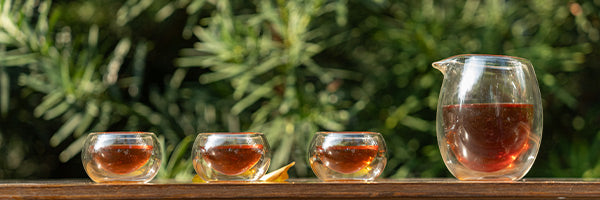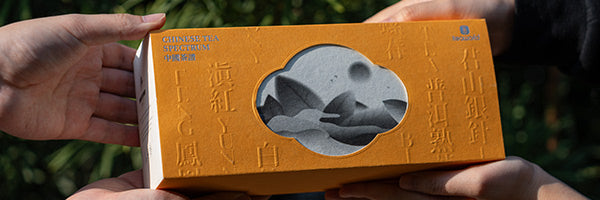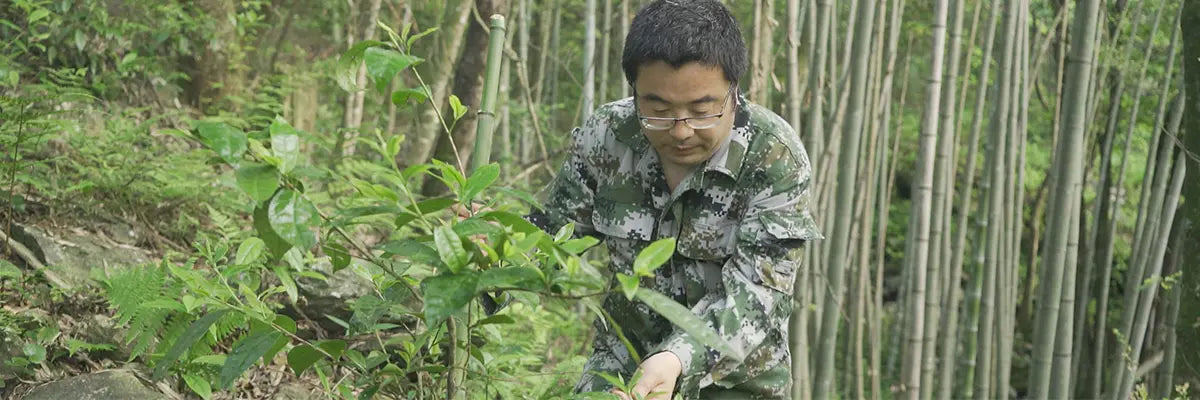Разновидности листового чая богаты и разнообразны, и каждый тип демонстрирует свои уникальные характеристики. Крепость листового черного чая, ароматные ноты листового улуна, свежесть листового зеленого чая и многое другое — все это стоит изучить. Когда вы погружаетесь в мир листового чая, это похоже на открытие двери в увлекательное царство.
Процессы приготовления чая определяют разнообразие листового чая.
В зависимости от методов производства листовой чай можно разделить на шесть основных категорий: зеленый чай, белый чай, желтый чай, улун, черный чай и темный чай. Фактически, свежие листья с одного и того же чайного растения могут быть переработаны в эти шесть категорий чая с помощью различных методов производства.
Каждая из шести категорий чая имеет свой собственный уникальный стиль, создавая различные ароматы и вкусы исключительно за счет сорта чайного растения и процесса производства, без использования искусственных ароматизаторов. Это делает их идеальным выбором для подарка здорового рождественского чая и новогоднего чая семье и друзьям.
В производстве шести категорий чая некоторые методы обработки являются общими для нескольких типов, например, Weidiao (завяливание), Rounian (скручивание), Shaqing (уничтожение зеленого) и сушка. Другие являются уникальными для определенных типов чая, например, процесс фиксации зеленого чая и процесс ферментации темного чая.
Различные виды чая подчеркивают различные аспекты в своих производственных процессах. Например, в производстве зеленого чая фиксация является важнейшим этапом, который определяет качество, влияя на аромат, цвет и целостность чайных листьев. В случае черного чая скручивание имеет важное значение, поскольку тщательное скручивание нарушает структуру листьев, позволяя проводить последующую ферментацию и создавая насыщенный вкус черного чая. Если вы не уверены, какой вид чая подходит вам по вкусу, рекомендуется изучить с помощью пробника чая, чтобы найти тот, который лучше всего соответствует вашим предпочтениям.
Знание 6 основных категорий листового чая
1.Зеленый чай

Листовой зеленый чай является одним из основных видов чая в Китае, а также самым ранним видом, появившимся в истории Китая. В процессе производства зеленый чай не подвергается ферментации, и готовый продукт сохраняет зеленые тона свежих чайных листьев, сохраняя значительное количество натуральных веществ. Сохраненные полифенолы и кофеин чая составляют более 85% от свежих листьев, хлорофилл сохраняется примерно на 50%, а также наблюдается минимальная потеря витаминов. Поэтому, если у вас есть друзья, которые ценят свежий вкус чая, то Green Tea Sampler от iTeaworld станет отличным подарочным набором для чая .
Типичными представителями зеленого чая являются Билуочунь, Люань Гуапянь, Лунцзин Западного озера, Шиен Юлу, Хуаншань Маофэн и другие.
2.Белый чай

Белый чай — это слабоферментированный чай, известный своими характеристиками: наличием множества почек, покрытием белым пушком и легким и сладким послевкусием. Он считается особым сокровищем среди китайских чаев. Процесс производства белого чая относительно естественный. После сбора свежих листьев их тонким слоем раскладывают на бамбуковых циновках под слабым солнечным светом или помещают в хорошо проветриваемые и хорошо освещенные помещения. Листья естественным образом вянут, высыхают на воздухе до содержания влаги около 70-80%, без жарки или скручивания, и медленно сушатся на медленном огне.
Белый чай характеризуется своим душистым и элегантным ароматом, свежим и освежающим вкусом и желто-зеленым настоем. Одной из примечательных особенностей белого чая является его пригодность для выдержки, часто улучшая вкус и оказывая полезные эффекты по мере выдержки.
К представителям белого чая относятся: Байхао Иньчжэнь, Белый пион, Шоумэй, Лунная красавица и другие.
3.Желтый чай

Отличительное качество желтого чая характеризуется «желтым настоем и желтыми листьями», что является результатом процесса приготовления чая, включающего уникальную технологию ферментации и окисления. Некоторые желтые чаи проходят процесс штабелирования перед скручиванием, чтобы получить мягкий желтый цвет, в то время как другие штабелируются или оставляются для созревания в течение длительного периода после скручивания. Некоторые могут подвергаться созреванию после первоначальной обжарки, в то время как другие достигают желаемого желтого оттенка во время последующей обжарки. Желтый чай можно разделить на три типа в зависимости от нежности и размера исходных листовых почек: Хуанъя Ча, Хуансяо Ча и Хуанда Ча.
Желтый чай относительно уникален и встречается реже среди шести основных категорий чая. Если у вас есть друзья, которые интересуются более нишевыми чаями, подумайте о том, чтобы подарить им набор желтого чая.
Типичные желтые чаи включают Цзюньшань Иньчжэнь, Хуошань Хуанъя, Желтый чай Юэян, Гоушань Маоцзянь и другие.
4.Чай Улун

Листовой улун — один из традиционных полуокисленных чаев Китая с различными сортами, что делает его категорией чая с ярко выраженными китайскими характеристиками среди основных видов чая страны. Улун проходит такие процессы, как сбор, Вэйдяо (завяливание), Цзоцин (встряхивание), Шацин (уничтожение зелени), Жунянь (скручивание) и сушка для получения высококачественного чая.
Чай улун известен своим насыщенным ароматом, свежим и освежающим вкусом и стойким послевкусием. Что отличает чай улун от других видов чая, так это его насыщенный аромат, что делает его подходящим подарком для друзей, которые любят исследовать ароматы чая.
Типичными сортами улунов являются Да Хун Пао , Те Гуаньинь, Хуанцзинь Гуй, Фэнхуан Даньцун, Линтоу Даньцун, Дунфан Мейрен и другие.
5.Черный чай

Черный листовой чай — это полностью окисленный чай. Во время обработки черного чая происходит химическая реакция, сосредоточенная вокруг ферментативного окисления полифенолов чая. Это приводит к значительным изменениям в химическом составе свежих листьев, с уменьшением более чем на 90% полифенолов чая и образованием новых компонентов, таких как теафлавины и теарубигины. Полученный черный чай характеризуется красным настоем, красными листьями и насыщенным, сладким и ароматным вкусом. Черный чай, как правило, хорошо принимается, что делает его хорошим выбором, когда вы не уверены, какой чай подарить другу.
Типичные черные чаи включают Лапсанг Сушонг, Цзинь Цзюньмей, Юньнаньский черный чай , Черный чай Индэ, Цзюцунь Хунмей и другие.
6.Темный чай

Черный чай производится путем заливки обработанного чая водой, а затем подвергается процессу постферментации, известному как мокрая засыпка (здесь «ферментация» относится к сложному процессу, включающему влагу, ферменты, анаэробные и аэробные условия). Черный чай считается постферментированным чаем, который подавляет ферментативную активность чайных листьев и стимулирует микробную активность. Он имеет определенные преимущества для пищеварения и регулирования кишечной микрофлоры.
Черный чай — один из традиционных постферментированных чаев Китая, в основном производимый в провинциях Хунань, Юньнань, Сычуань и других. Традиционный черный чай изготавливается из выдержанных темноволосых чайных листьев и плотно прессуется. Черный чай характеризуется глубоким красным цветом, крепким вкусом и уникальным ароматом. Он является фаворитом среди многих опытных любителей чая, что делает тщательно отобранный черный чай прекрасным подарком для друзей, которые наслаждаются чаем уже много лет.
Типичные темные чаи включают темный чай Хунань Аньхуа, чай Юньнань Шу Пуэр и чай Гуанси Любао.
Разные виды листового чая требуют разных методов заваривания.
Зеленый чай лучше всего заваривать горячей водой температурой от 80 до 90 градусов по Цельсию. Избегайте длительного заваривания, чтобы нежные листья не стали черствыми. Зеленый чай известен своим свежим и бодрым вкусом, предлагая освежающий и уникальный опыт. Кроме того, он обладает такими преимуществами, как снятие жара, снятие сухости и повышение бдительности.
Подобно зеленому чаю, белый и желтый чай не следует заваривать при высоких температурах. Если температура воды превышает 95 градусов по Цельсию, это может привести к потере вкусовых ощущений от питья. Однако выдержанный белый чай является исключением; его можно кипятить или заваривать, что усилит вкус выдержанного белого чая.
Для ежедневного употребления красный чай можно заваривать водой температурой 90-95 градусов по Цельсию. Улун можно заваривать при несколько более высокой температуре, около 95-100 градусов по Цельсию. Первые 1-2 заварки красного чая и улуна требуют «пробуждения» чайных листьев, а последующие заварки раскроют оптимальный вкус.
Черный чай требует более высокой температуры заваривания, чтобы полностью раскрыть свой аромат и вкус. При заваривании черного чая рекомендуется промыть чайные листья кипятком при температуре 100 градусов по Цельсию, чтобы пробудить чай, а последующие заваривания раскроют весь вкус черного чая.
Чтобы в полной мере оценить характеристики листового чая, лучше всего попробовать и испытать его лично. Вы можете попробовать листовой чай iTeaworld . iTeaworld предлагает различные образцы чая в виде чайных наборов. Это позволяет вам экономно и удобно испытать вкусы лучшего листового чая .
Надеюсь, эта статья поможет людям понять некоторые базовые знания о листовом чае. Изучение мира листового чая лучше всего проводить с расслабленным и любопытным настроем. Пробуя, испытывая и обмениваясь идеями, вы сможете открыть для себя больше красоты листового чая.











































































